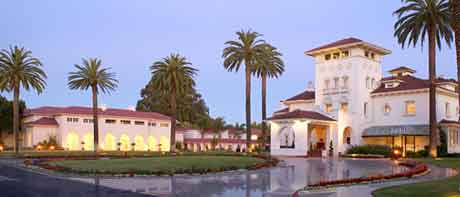Last week, the Council emerged out of closed session directing staff to communicate and negotiate with the unions regarding the possibility of a ballot measure and pension reform. The goal is to combine these two topics and create/work within a timeframe if possible.
For savings to occur, it is important to have something fully implemented prior to next year’s budget. The key word is “implemented,” as savings need to be delivered in advance of the city manager’s budget in 2012 so that we can save services from being cut and save additional city employees from being laid off. Otherwise every city department better hope that federal grants come raining down for every city position because our budget will be entering a $70 million dollar deficit year. Who knows, maybe once-plentiful federal money will be pouring out of the sky since there will be a presidential election.
I am concerned that the truth regarding pension reform is not being shared appropriately. I think that the process needs to be public so residents, retirees and city employees can hear the information first hand from both sides. The council chambers should be used each time to allow a public audience to observe first hand about the realities and limitations of the current pension system and hear the proposals directly from the negotiator’s mouth.
This would eliminate any disconnect from union representatives and the union membership. It would also allow retirees to be fully plugged in as they cannot rely on the current union membership to fully support their interests. Finally, a public process would allow residents to see what each side says as the residents will be the final judge who would approve through a ballot measure. Even changing the the current pension match from 250 percent to 249 percent requires voter approval.
For too long we have wasted time back and forth about what was said or what was not said and even the tone of voice in which words were delivered. There is nothing to hide, so let’s get it all on the table. If we cannot come to agreement then it is off to the ballot box with an actuarial sound set of pension reforms that include management and the city council. However, if there can be an alternative, through negotiation and education, which delivers true savings to maintain city services then that would be ideal.
Moreover, it cannot be reducing a 250 percent pension match to 230 percent. The savings needs to verified and substantial since the problem is not small. These changes must go to the ballot box to alter the City Charter whether by fiat or mutual agreement.
Otherwise, we head down the same road of mistrust on both sides with silly games and political posturing with closed-door meetings. Pension systems have dramatically changed as we know in the non-union private sector, however they have also changed in unionized organizations like the construction trades. Local governments are next.
This topic is too important to have behind closed doors. Let’s suspend all boards and commissions not in the city charter and put these meetings as the top priority and on TV. There could be no other topic more important to San Jose so let us focus and get it done. We need to move past this expeditiously so we can focus on the San Jose of the future, which is not solely about reducing services.
In other news last week the Council voted 10-1 to exempt affordable housing projects that are in the pipeline from paying park fees. I will let you guess who voted no.

